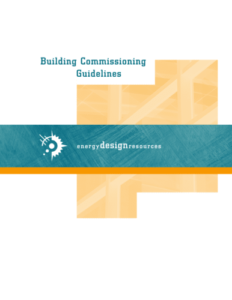Building Commissioning Guidelines 2007 Edition
Building Commissioning Guidelines 2007 Edition
Building commissioning Guidelines can ensure that a new building begins its life cycle at optimal
productivity, and improves the likelihood that the building will maintain this level
of performance. Building owners spend more on complex building systems than ever before, yet many find they are not getting the performance they expect. A 1994 study of 60 commercial buildings found that more than half suffered from control problems. In addition, 40% had problems with heating, ventilation and air-conditioning (HVAC) equipment and one-third had sensors that were not operating properly.1 An astonishing 15% of the buildings studied were actually missing specified equipment. And approximately one-quarter of them had energy management control systems, economizers, and/or variable speed drives that did not run properly. Problems also frequently occur on the envelope, structural and electrical systems of many new buildings.
You can also Read Advanced Simulation Guidebook Volume II – The High Performance Building Process
Building Commissioning Guidelines 2007 Edition Content
- Part 1: Introduction to Commissioning
![Building Commissioning Guidelines Building Commissioning Guidelines]()
- Part 2: Commissioning Guide for Design Professionals
- Marketing Commissioning Services to Your Clients
- Commissioning References and Resources
- Reference Notes
- Glossary
- 1 – Sample Request for Proposal
- 2 – Sample Verification Checklist
- 3 – Sample Functional Test Plan
- 4 – How to Develop a Commissioning Plan
- 5 – Design Documentation Necessary for Commissioning
- 6 – Specification Language for“Commissioning-Friendly” Features
Until recently, the most frequently mentioned benefit of commissioning was its energy related value. Building commissioning ensures that the energy savings expected from the design intent are implemented correctly. While these benefits are significant, they are far outweighed by the non-energy-related benefits of commissioning. These include:
- Proper and efficient equipment operation
- Improved coordination between design, construction and occupancy
- Improved indoor air quality, occupant comfort, and productivity
- Decreased potential for liability related to indoor air quality, or other HVAC problems
- Reduced operation and maintenance costs
Commissioning also applied to existing buildings to restore them to optimal performance. Retrocommissioning is a systematic, documented process that identifies low-cost O&M improvements in an existing building and brings that building up to the design intentions of its current usage.


Comments are closed.